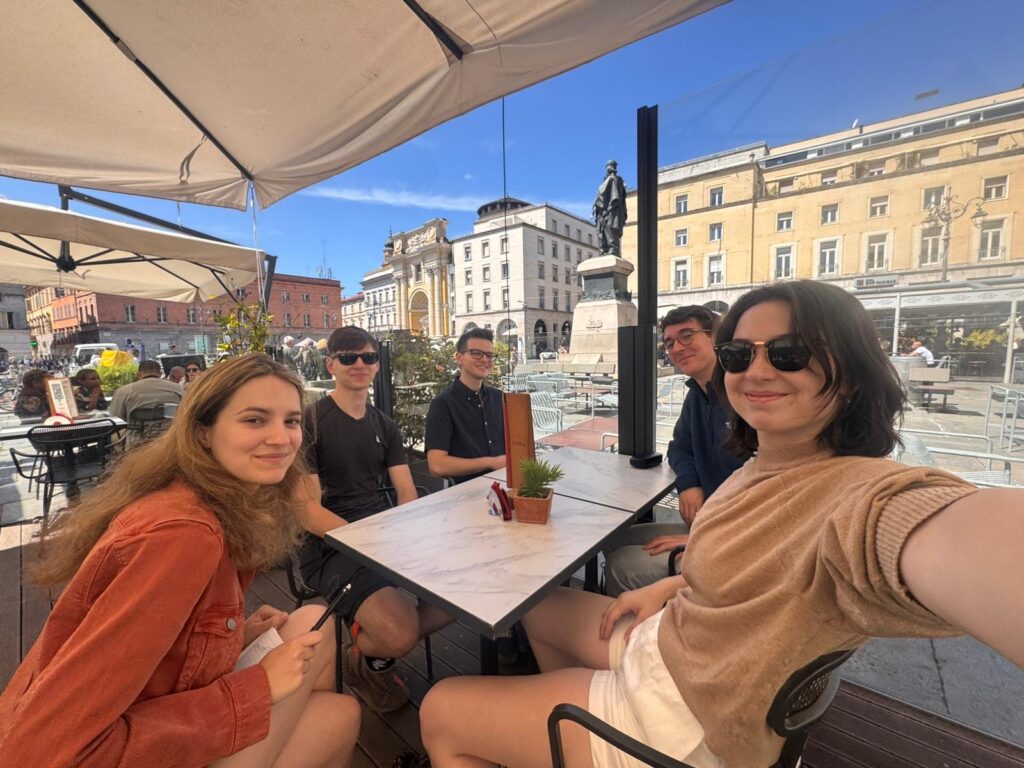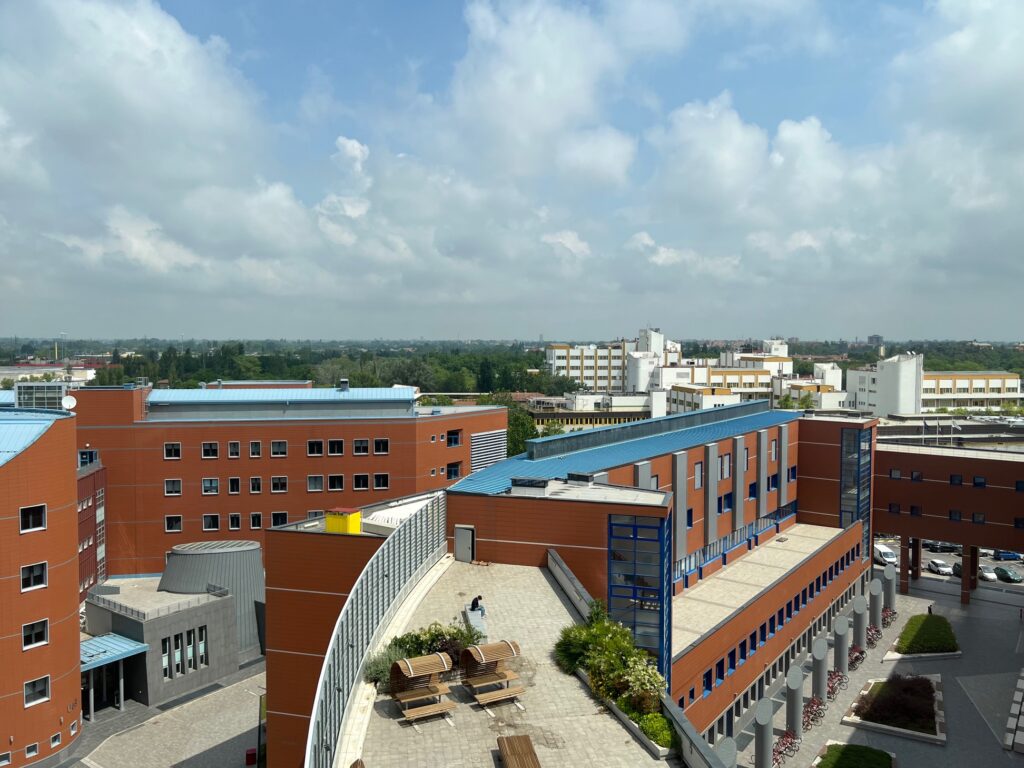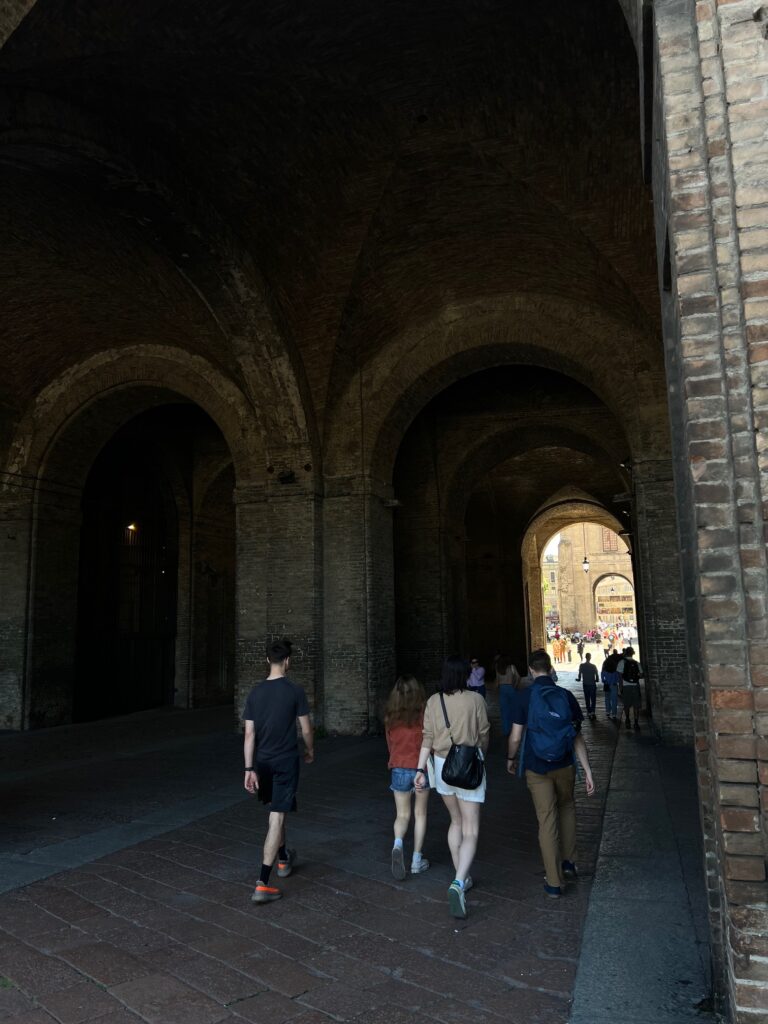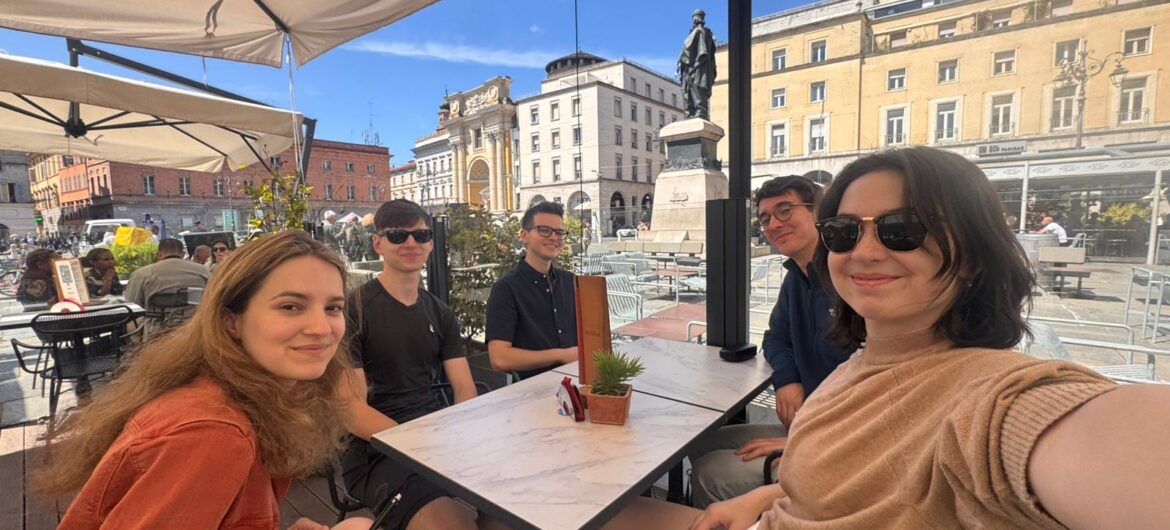Author: William Archacki
This week we arrived in Italy!
We are a cohort of six American students funded by the National Science Foundation’s CRYSTAL Dynamics IRES grant to conduct research on materials chemistry at Italian universities this summer. I met my peers during a layover at Chicago O’Hare airport, where we boarded a flight to Milan. An afternoon on Italy’s high speed rail network brought us each to our new cities: three students at the University of Modena, and three at the University of Bologna. I’ll live and work in Bologna for a total of twelve weeks.
Bologna sits in the Emilia-Romania region of Italy, south of the Alps and northeast of the rolling Apennine mountains that run along Italy’s spine. As you ride the train from Milan through Emilia-Romania, you see the expanses of wheatfields and vineyards that make the region’s cities famous for their food. From the wheat come local specialties including tortellini and tagliatelle, and from the grapes comes Lambrusco, a light and sweet red wine. The names of cities hint at the rich culinary tradition—the people of Parma were progenitors of prosciutto di Parma as well as parmesan cheese, while Bologna is the namesake of mortadella Bologna, better known for its American imitation, baloney sausage.
It was fitting that the first thing we did after finally putting our bags down was to appreciate the food. In Bologna, we walked to the city center to order charcuterie and pasta at a small restaurant with tables in the street.

My lab at the University of Bologna is a new facility built on the outskirts of the city, near the sprawling campus of the National Research Council of Italy. The University of Bologna complex houses of some of the university’s science departments, well-equipped with the instrumentation we’ll need for our research. The older part of the university is located toward the city center, and I’m told that the old chemistry facilities where some of the department’s older faculty studied back in the day have been converted into a museum.

For now, we are learning to use the basic instrumentation in the lab. Before this week, I had never performed transmission infrared spectroscopy, the “real deal” classical infrared method that can yield higher-resolution spectra for certain sample types, particularly those that are less amenable to attenuated total reflection (ATR) techniques used in common tabletop setups. Each of the IRES students will start an independent project later in the summer under the guidance of graduate students and professors.
During the weekend, the group of us made a daytrip to Parma, just thirty minutes past Modena on the rail line running from Bologna Centrale. We loaded up on the local delicacies—prosciutto di Parma and crystalline shards of Parmigiano Reggiano, naturally—before setting off toward the art museum. In the Galleria nazionale di Parma, we saw paintings by Leonardo da Vinci and Ludovico Carracci.





